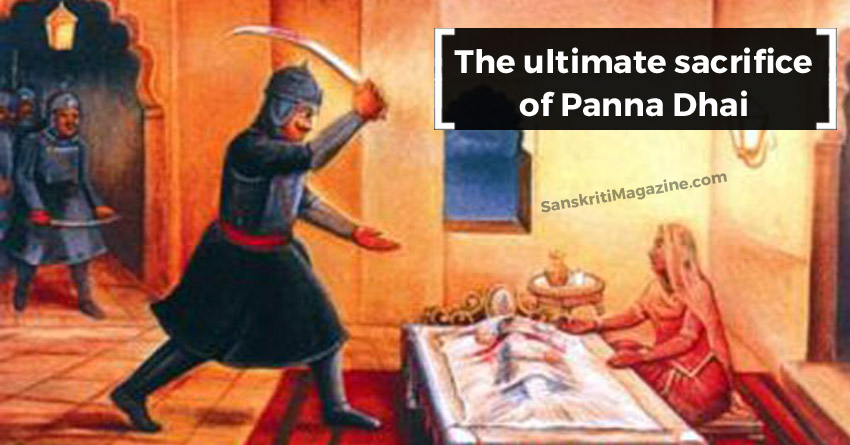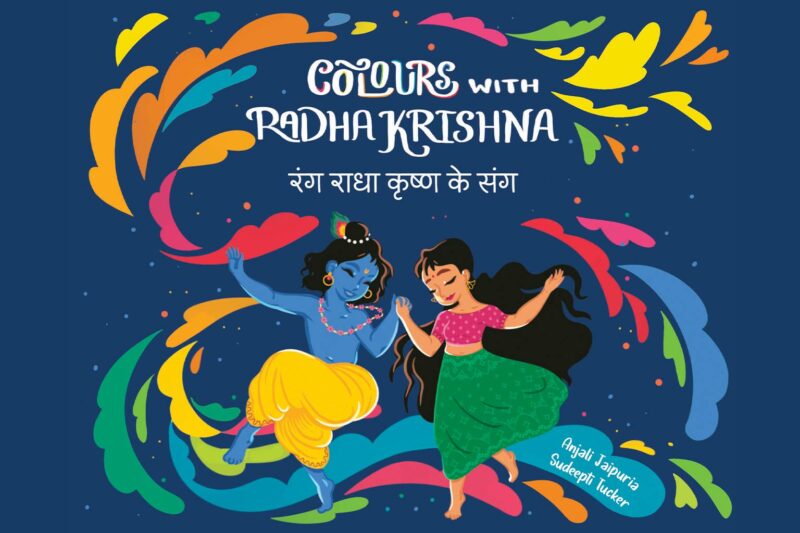Panna Dhai, a 16th century Rajput woman of the Kheechee tribe, nursemaid to Udai Singh, the fourth son of Maharana Sangram Singh I (SANGA) (1509-1527). Her name, Panna means emerald, and dhai means a wet nurse in hindi language. She had been given charge of young Udai, breast – feeding him virtually from his birth in 1522, along with her own son Chandan (also known as Moti), who was of similar age and Udai’s playmate.
However, the second and third decades of the 16th century were troubled times, and events moved rapidly. Sanga died of wounds sustained at the Battle of Khanva(1527) against Mughal emperor Babur. Sanga’s eldest son Bhoj Raj had been killed in battle in 1521. Three of his other sons died during his lifetime. Then his eldest son succeeded to the throne as Maharana Ratan Singh II (1527-1531). However, when he died after ruling only four years, the vile-tempered Vikramaditya II succeeded to the throne at the young age of 14.
Vikramaditya took a small force of nobles and their armies into the hills to provide a second attack force; and young Udai Singh was spirited away with a small party that included Panna and her son to safety in Bundi. Chittor was sacked and Bahadur Shah returned to Gujarat. Udai Singh returned to the capital, and Vikramaditya came back to continue his reign. Unfortunately, his temperament had not improved with defeat and, one day in 1536, he physically abused a respected old chieftain at the Court. This proved to be the final straw for the Mewar nobles; they placed Vikramaditya under palace arrest, leaving the object of Panna Dhai’s love and loyalty, Udai Singh as heir-elect to the throne.
The Court appointed a distant cousin, Banbir to act as his Regent. He was, allegedly, the illegitimate son of Udai’s uncle, Prithvi Raj (Crown Prince Prithvi Raj had a fight with his younger brother, Sangram Singh, and was sent into exile where he died, never to succeed to his birthright as Maharana of Mewar). Banbir, who considered himself to be the rightful heir to the throne knew the time was right to act. One evening that same year, he assassinated the imprisoned Vikramaditya, then hurried towards the rawala to get rid of the only remaining barrier to his ambition, the 14-year-old Maharana-elect, Udai Singh.
Panna Dhai had already fed her beloved son and her royal charge, and put them to bed. A servant (vari) ran in to tell her of the nearby assassination. Immediately, the loyal nursemaid realised what Banbir was doing. She also knew that, for the future of Mewar, young Udai must be saved. Urgently, she instructed the servant to put the sleeping prince into a large basket and smuggle him out of the fort to a spot by the nearby river where she would join them later. As soon as the servant left with the basket and its precious royal contents, she summoned an amazing strength of will that is characteristic of so many Rajputs: she lifted her sleeping son, Chandan, from his bed and placed him on the prince’s bed, covering him with a blanket.
Within moments, Banbir burst into the room, sword in hand. When asked the whereabouts of the infant Maharana, Panna Dhai pointed to the occupied bed … and watched in horror as the murderer slew her son. Banbir then called a meeting of the Court, informed the gathered chiefs that both Vikramaditya and Udai were dead and, claiming his dubious right to the throne, proclaimed himself the new king of Mewar.
Meanwhile, the grief-stricken Panna Dhai watched as her son was hastily cremated. She then packed some clothing and meagre supplies into a bag, and hurried from the fort. At the designated spot by the river, she took charge of the young king and urged the servant, in the name of Mewar, not to mention a word of what had transpired that night. The woman and child then began an amazing trek of endurance, which lasted many weeks. They called at several towns seeking refuge from the local Chieftains.
However, having heard of events at the capital, and to evade any repercussions from the violent Banbir, the Rawats (Chiefs) refused assistance. As Panna and Udai struggled on through the rugged valleys of the Aravalli ranges, only the local tribals, the Bhils, traditionally faithful to the Mewar crown, gave the couple food and temporary lodgings. Finally, they arrived at Kumbhalgarh, many kilometres west of Chittor, where the local governor, a Jain merchant named Asha Depura Shah, agreed to give the child protection.
For a couple of years, Panna Dhai and the young king remained at Kumbhalgarh, where he was passed off as Asha Shah’s nephew. However, in 1539, a chieftain from Marwar visited the fort, and the 17-year-old Udai was sent to receive him. The youth’s dignified manner convinced him he was no nephew of the Jain governor, and rumour quickly spread that Udai Singh might still be alive. A deputy of chiefs from Chittor went in secret to Kumbhalgarh, where they interviewed not only the young man, but also Panna Dhai.
The royal nursemaid, knowing her young charge would now be in safe hands, told them the full story of the deception and the escape. The nobles proclaimed Udai as their Maharana and his coronation was held at Kumbhalgarh. In 1540, backed by a large combined Mewar and Marwar force, Udai Singh, then aged 18, marched on Chittor to reclaim his throne. Hearing of their approach, Banbir the usurper mounted an army and rode out to repel them. They met at Mavli (northeast of Udaipur-southwest of Chittor) and Banbir was defeated (he was either killed or he escaped, never to return). Maharana Udai Singh rode into Chittor acclaimed by the populace.
And at that point, Panna Dhai, the humble nursemaid, disappeared from the pages of Mewar’s history. However, her name and her deeds will live forever as symbols of extraordinary loyalty, patriotism and personal sacrifice. But for her, the long reign of the House of Mewar would surely have ended, and the city of Udaipur, later founded by Udai Singh, would never have existed.











